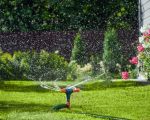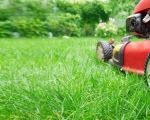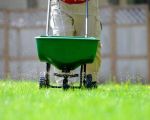
- Importance-of-Winter-Preparation
- Steps-to-Prepare-Your-Lawn-for-Winter
- Common-Mistakes-to-Avoid-in-Winter-Lawn-Care
- Real-Life-Examples-of-Winter-Lawn-Preparation
- Finding-Expert-Help-for-Winter-Lawn-Care
1. Why Preparing Your Lawn for Winter Matters
When the temperatures drop and daylight hours shorten, your lawn enters a critical phase that requires special attention. Preparing your lawn for winter is essential because it ensures your grass can survive the cold months and emerge healthy and vibrant in spring. Without proper care, winter stress can lead to patchy, weak, or even dead grass. This phase is not just about preventing damage, but also about setting your lawn up for strong growth once warmer weather returns.
Winterizing your lawn is more than just a seasonal chore; it’s a proactive investment in the long-term health of your yard. It’s worth noting that grass type, local climate, and soil conditions all play significant roles in how you should approach winter lawn care. Recognizing these factors helps you apply the right techniques, tailored to your lawn’s specific needs.
Understanding the effects of winter on grass
Cold temperatures slow down grass growth and affect soil activity. Frost and snow can compact soil and create conditions where grass roots may struggle to breathe. Without adequate preparation, lawns can suffer from diseases, pest infestations, and nutrient deficiencies that become evident once spring arrives.
The benefits of early preparation
By starting your lawn winterization process early, you allow the grass to strengthen its root system and store necessary nutrients. This reduces winter stress and increases the chances of a lush lawn the next season. Additionally, early preparation helps prevent common problems such as snow mold and excessive soil compaction.
2. Key Steps to Prepare Your Lawn for Winter
Proper preparation involves several detailed steps, each contributing to the lawn’s overall resilience. Follow these methods carefully to protect your lawn effectively.
Step 1: Perform a thorough lawn cleanup
Remove fallen leaves, dead grass, and debris that can trap moisture and promote fungal growth. Raking and clearing your lawn prevents suffocation of the grass and reduces the risk of winter diseases. While it might seem tedious, this step is crucial to allow air and light to reach the grass during dormant months.
Step 2: Mow the lawn correctly
Cut your grass slightly shorter than usual—about 2 to 2.5 inches—but avoid scalping it. A well-cut lawn reduces the chances of snow mold while still providing enough blade for photosynthesis until the grass goes dormant. Ensure your mower blade is sharp to avoid tearing grass, which can create entry points for disease.
Step 3: Fertilize with winter-specific nutrients
Applying a slow-release fertilizer high in potassium strengthens grass roots and improves cold tolerance. This nutrient supports cellular function during freezing temperatures, helping your lawn survive harsh conditions. Avoid nitrogen-heavy fertilizers late in the season, as they encourage growth that is vulnerable to frost damage.
Step 4: Aerate compacted soil
Over time, soil compaction restricts oxygen flow to roots. Aeration, by removing small plugs of soil, improves root respiration and water absorption. This step is especially beneficial if your lawn experiences heavy foot traffic or has clay-heavy soil. Enhanced soil health is a major factor in winter hardiness.
Step 5: Overseed thin or bare patches
If you notice sparse areas, overseeding helps fill those gaps before winter arrives. Choose seed varieties compatible with your existing grass to ensure a smooth transition and uniform lawn appearance come spring.
Step 6: Control weeds and pests
Apply appropriate treatments to minimize weeds and pests that could weaken your lawn during dormancy. Strong competition from weeds or damage from insects can reduce your lawn’s ability to withstand winter stress.
3. Avoiding Common Pitfalls in Winter Lawn Care
Even well-intentioned lawn owners can fall into certain traps that undermine winter preparation efforts. Understanding these mistakes helps you take corrective action before it’s too late.
Neglecting to clear leaves and debris
One common error is leaving leaves and organic waste on the lawn, which smothers grass and encourages fungal diseases. Think of your lawn like your skin—clogged pores lead to problems, and the same applies here.
Cutting grass too short or too long
Mowing too short stresses the grass and exposes crowns to freezing, while leaving it too long increases risk of mold and decay under snow cover. The balance is crucial and depends on your grass type and local weather.
Skipping fertilizer or using the wrong type
Fertilizing with high nitrogen late in the season causes tender growth prone to frost damage. Conversely, no fertilizer means the grass lacks the nutrients needed to build reserves. Slow-release, potassium-rich fertilizers are the best choice for winter.
Delaying aeration and overseeding
Procrastination can mean you miss the ideal window for soil aeration and seed establishment. These steps are best done several weeks before the first hard freeze to allow roots and seedlings to settle in.
4. Real-Life Examples and Stories on Preparing Lawns for Winter
Consider the story of a homeowner in the northern US who ignored winter lawn preparation for several years. Each spring, their yard showed significant patchiness and weed growth, requiring costly renovations. After consulting professionals and following a structured winterizing routine, their lawn dramatically improved in both resilience and appearance over two seasons.
Similarly, a community garden project in a cold region incorporated aeration and overseeding every fall, resulting in vibrant, healthy turf that withstood harsh winters without damage. These real-life cases highlight how proper preparation not only saves money in the long term but also creates a pleasant outdoor environment year-round.
5. How to Get Professional Assistance for Winter Lawn Care
While DIY lawn care can be rewarding, winter preparation sometimes requires specialized knowledge and equipment. Professional lawn care services offer tailored programs that address your lawn’s unique needs based on grass type, soil conditions, and local climate.
If you’re unsure how to best prepare your lawn for winter, Lawn Care Services can provide expert advice, seasonal treatments, and quality products to keep your lawn healthy through cold weather. Their trained specialists can perform aeration, fertilization, overseeding, and pest control with precision, saving you time and ensuring optimal results.
Investing in professional help guarantees your lawn gets the right care at the right time, giving you peace of mind and a beautiful yard when spring arrives.








